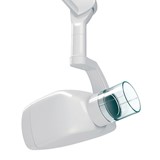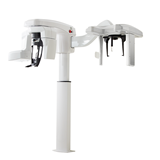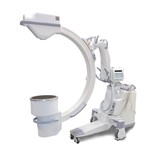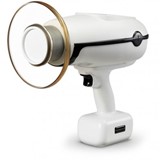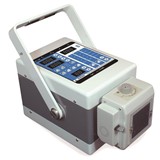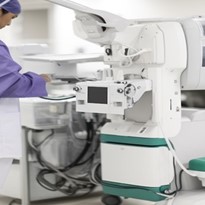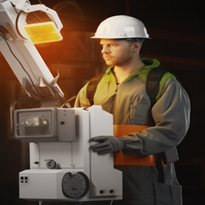I. Introduction to Mobile X-Ray Machines and Their Significance
Mobile X-ray machines represent a pivotal advancement in the realm of medical imaging, revolutionizing the way healthcare providers diagnose and treat patients. This introductory section will elucidate the significance of these cutting-edge devices and set the stage for a comprehensive exploration of their evolution, benefits, applications, and impact on patient care.
A.Definition and Brief History of Mobile X-Ray Machines
- Mobile X-ray machines, also known as portable X-ray machines, are compact imaging devices designed for easy transport and on-the-spot radiographic examinations.
- The concept of mobile X-ray machines can be traced back to the early 20th century when the medical community recognized the need for portable diagnostic tools.
B. Significance in Modern Healthcare
- In today's healthcare landscape, mobile X-ray machines have become indispensable tools for medical professionals across various specialties.
- Their significance lies in their ability to provide quick and accurate diagnostic information, contributing to better patient outcomes.
- These machines play a crucial role in scenarios where conventional fixed X-ray equipment is impractical or inaccessible.
II. Evolution of Medical Imaging Technologies
The evolution of medical imaging technologies represents a fascinating journey marked by groundbreaking innovations that have transformed the field of healthcare. This section will take you on a historical voyage through the development of medical imaging, focusing on the pivotal shift from traditional X-rays to the portable wonders that are mobile X-ray machines.
A.Historical Overview of Medical Imaging
- Medical imaging has its roots in the late 19th century with the discovery of X-rays by Wilhelm Conrad Roentgen in 1895.
- This discovery revolutionized the field of medicine by allowing physicians to visualize the internal structures of the human body without invasive procedures
.
B.Transition from Traditional X-Rays to Mobile X-Ray Machines
- Traditional X-ray machines, characterized by large, fixed installations, played a fundamental role in medical diagnosis for decades.
- The need for mobility and flexibility in healthcare settings led to the development of mobile X-ray machines as an innovative solution.
C.Technological Advancements Driving Evolution
- The evolution of medical imaging technology has been fueled by continuous advancements in electronics, computing power, and materials science.
- These advancements have enabled the miniaturization of X-ray equipment, making it possible to create highly portable and versatile devices.
III. Benefits of Mobility and Portability in X-Ray Machines
In the realm of modern healthcare, the integration of mobility and portability into medical equipment has become a pivotal game-changer. Mobile X-ray machines, designed with a focus on flexibility and adaptability, epitomize this evolution. This section will delve into the paramount importance of mobility in healthcare, explore the multifaceted advantages that portable X-ray machines offer, and elucidate the key features underpinning their mobility.
A.The Importance of Mobility in Healthcare
In healthcare, timely access to diagnostic tools and imaging services can significantly impact patient outcomes. The importance of mobility in this context cannot be overstated. Mobile X-ray machines are emblematic of the healthcare industry's commitment to delivering diagnostic capabilities wherever and whenever they are needed.
These machines enable healthcare professionals to transcend the constraints of traditional fixed imaging facilities. Whether within the confines of a bustling urban hospital, a remote rural clinic, or the dynamic environment of an emergency response team, the mobility of X-ray machines ensures that critical diagnostic information is readily available. This portability facilitates rapid decision-making, enhances patient care, and reduces the logistical challenges associated with transporting patients to centralized radiology departments.
B. Advantages of Portable X-Ray Machines
1. Accessibility in Challenging Environments
Portable X-ray machines excel in scenarios where accessibility to imaging facilities is limited or compromised. Natural disasters, humanitarian missions, and remote field hospitals are just a few examples of situations where these machines prove invaluable. In such challenging environments, portable X-ray devices can be swiftly deployed, aiding in the assessment and triage of patients without the need for infrastructure support.
2. Streamlined Workflow in Clinical Settings
Within the clinical setting, the integration of portable X-ray machines into the workflow streamlines patient care. Unlike their stationary counterparts, which often require patients to be transferred to dedicated radiology departments, mobile X-ray units can be brought directly to the patient's bedside. This expedites the diagnostic process, reduces patient discomfort, and minimizes the risk associated with moving critically ill individuals. Moreover, it optimizes resource utilization, as healthcare providers can efficiently allocate their time and expertise.
C. Key Features Enabling Mobility
The mobility of X-ray machines is underpinned by a set of key features and design considerations. These features not only ensure the machines' portability but also enhance their usability and diagnostic capabilities. Some of the noteworthy attributes include:
- Compact and Lightweight Design: Portable X-ray machines are engineered to be compact and lightweight, making them easy to transport and maneuver within constrained spaces.
- Battery-Powered Operation: Many mobile X-ray units are equipped with rechargeable batteries, enabling them to function even in locations without a readily available power source. This feature is especially vital in remote or emergency situations.
- Wireless Connectivity: Integration with wireless technology allows for seamless transmission of images to healthcare information systems, facilitating real-time consultations and remote diagnostics.
- User-Friendly Interfaces: These machines are designed with user-friendly interfaces, ensuring that healthcare professionals, regardless of their experience level, can operate them efficiently.
IV. Applications in Emergency Rooms, ICUs, and Remote Locations
In the dynamic landscape of modern healthcare, rapid and precise diagnostic capabilities are paramount, particularly in critical settings such as emergency rooms, intensive care units (ICUs), and remote healthcare facilities. Mobile X-ray machines have emerged as indispensable tools, revolutionizing the way medical professionals approach diagnosis and treatment in these critical healthcare environments. This section delves into the pivotal role of mobile X-ray machines in emergency medicine, their utility in ICUs, and their outreach potential to remote and underserved areas.
A. Role of Mobile X-Ray Machines in Emergency Medicine
- Rapid Diagnosis and Treatment
In the fast-paced and often chaotic environment of an emergency room, timely and accurate diagnosis can mean the difference between life and death. Mobile X-ray machines play a pivotal role in expediting the diagnostic process, offering several key advantages:
- Immediate Imaging: Mobile X-ray units can be swiftly deployed to the patient's bedside, providing immediate imaging capabilities. This eliminates the need for patients to be transported to a radiology department, saving critical time.
- Reducing Delays: Traditional radiography methods may involve long waiting times for both the acquisition of images and their interpretation. Mobile X-ray machines enable on-the-spot image capture and evaluation, minimizing diagnostic delays.
- Early Intervention: Prompt diagnosis allows healthcare professionals to initiate appropriate treatments swiftly, especially in cases of trauma, fractures, or suspected internal injuries. This not only improves patient outcomes but also enhances the efficiency of emergency departments.
- Minimizing Patient Movement
Patient mobility is often restricted due to various medical conditions or injuries. Mobile X-ray machines, designed with portability and maneuverability in mind, offer a solution that minimizes the need for patient movement, reducing discomfort and potential complications:
- Bedside Imaging: Mobile X-ray units can be positioned directly next to the patient's bed, enabling imaging without the necessity of patient relocation. This is particularly crucial for patients with spinal injuries, fractures, or those in critical conditions.
- Minimizing Discomfort: In cases where moving a patient is medically contraindicated, mobile X-ray machines provide a non-invasive means of obtaining diagnostic images. This contributes to patient comfort and overall care quality.
B. Utility in Intensive Care Units (ICUs)
- Real-time Monitoring and Assessment
Intensive care units serve as the frontline for managing critically ill patients who require constant monitoring and timely interventions. Mobile X-ray machines bring real-time imaging capabilities directly to the ICU, offering invaluable benefits:
- Continuous Surveillance: In ICUs, patients often experience rapid changes in their medical conditions. Mobile X-ray units can be used for routine and on-demand imaging, allowing healthcare teams to monitor changes, assess treatment effectiveness, and make critical decisions promptly.
- Minimizing Disruption: Moving critically ill patients to a radiology department for imaging can be risky and may lead to complications. Mobile X-ray machines enable diagnostic imaging within the ICU, minimizing patient disruption and maintaining a controlled medical environment.
- Reducing Risks in Critical Situations
In critical healthcare settings, minimizing risks and ensuring patient safety are paramount. Mobile X-ray machines are designed to meet these specific needs:
- Exposure Control: Mobile X-ray units are equipped with advanced radiation safety features, including adjustable dose settings and automatic exposure control. These features help mitigate the risks associated with ionizing radiation exposure to both patients and healthcare providers.
- Infection Control: Infection control is a significant concern in ICUs. Mobile X-ray machines are designed with easy-to-clean surfaces and minimal contact points, reducing the risk of cross-contamination between patients.
C. Outreach to Remote and Underserved Areas
1. Telemedicine and Mobile X-Ray Solutions
Access to quality healthcare remains a challenge in remote and underserved areas. Mobile X-ray machines have the potential to bridge this gap through telemedicine and mobile healthcare initiatives:
- Telemedicine Integration: Mobile X-ray units can be integrated into telemedicine platforms, allowing remote healthcare providers to consult with specialists and radiologists in real-time. This enables expert guidance for diagnosis and treatment planning, even in remote locations.
- Community Health Outreach: Mobile X-ray units can be deployed to community health centers, rural clinics, and mobile medical units, extending diagnostic capabilities to underserved populations. This is particularly impactful for early disease detection and preventive care.
2. Challenges and Considerations
While the potential of mobile X-ray machines in remote healthcare is promising, several challenges must be addressed:
- Infrastructure: Remote areas may lack the necessary infrastructure, including reliable power sources and internet connectivity, which are essential for mobile X-ray operation and telemedicine.
- Training: Adequate training for healthcare professionals in remote areas is crucial to ensure the safe and effective use of mobile X-ray machines.
- Cost: Acquiring and maintaining mobile X-ray equipment can be costly, particularly for resource-constrained healthcare facilities in remote regions.
- Regulatory Compliance: Ensuring compliance with healthcare regulations and radiation safety standards is essential, even in remote settings.
V. Enhancing Patient Care through Rapid Diagnostic Capabilities
Mobile X-Ray machines have ushered in a new era of healthcare, revolutionizing the way patient care is delivered. In this section, we delve into how these advanced imaging tools are enhancing patient care through their rapid diagnostic capabilities. By providing improved patient experiences, enabling precision medicine, and offering real-world examples of enhanced care, Mobile X-Ray machines are playing a pivotal role in transforming healthcare outcomes.
A. Improved Patient Experience and Comfort
One of the key advantages of mobile X-ray machines is their ability to enhance the overall experience and comfort of patients. Traditional X-ray procedures often require patients to be transported to a dedicated radiology department, which can be physically taxing and emotionally distressing, especially for those who are already in a fragile state of health. Mobile X-ray machines bring the diagnostic capabilities to the patient's bedside, minimizing the need for patient movement and reducing stress.
- Minimizing Patient Discomfort: Mobile X-ray machines are designed with patient comfort in mind. They can be easily positioned and adjusted to accommodate the patient's condition, ensuring minimal discomfort during the procedure.
- Reducing Exposure to Infections: In the context of contagious diseases, such as during pandemics, mobile X-ray machines can help reduce the risk of transmission by minimizing the need for patients to move throughout the hospital.
- Enhancing Pediatric Care: Mobile X-ray machines are particularly valuable in pediatric care, where children may be frightened or uncooperative in unfamiliar settings. Bringing the equipment to the child's bedside can alleviate anxiety and improve cooperation.
- Enhancing Geriatric Care: For elderly patients with limited mobility, transporting them to a radiology department can be challenging and uncomfortable. Mobile X-ray machines simplify the process, making it more comfortable for these patients.
B. Precision Medicine and Tailored Treatments
Mobile X-ray machines contribute significantly to the concept of precision medicine—a medical approach that customizes healthcare decisions, treatments, practices, and products to individual patients. By providing rapid and precise diagnostic information, these machines empower healthcare providers to tailor treatments to the specific needs of each patient.
- Accurate Diagnosis: Mobile X-ray machines offer high-resolution imaging that assists healthcare providers in making accurate diagnoses. Whether it's identifying a fracture, assessing the progression of a disease, or detecting anomalies, the precision of these machines is invaluable.
- Treatment Planning: With detailed and immediate imaging results, physicians can develop tailored treatment plans that take into account the unique characteristics of a patient's condition. This not only improves the chances of successful treatment but also minimizes the risk of unnecessary procedures or interventions.
- Monitoring Progress: In chronic diseases or conditions requiring ongoing treatment, mobile X-ray machines enable continuous monitoring. This allows healthcare providers to adjust treatments in real-time, optimizing the patient's response to therapy.
In conclusion, mobile X-ray machines have brought about a transformative shift in the field of medical imaging, offering portability, accessibility, and rapid diagnostic capabilities that significantly enhance patient care. These devices have evolved from the early 20th century concept of portable diagnostic tools and now play an indispensable role in modern healthcare.




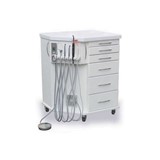




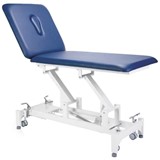

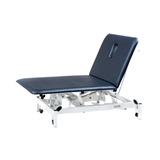





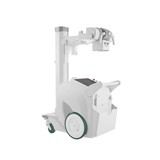
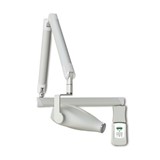

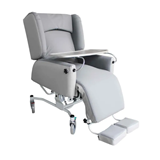
-160x160-state_article-rel-cat.png)

